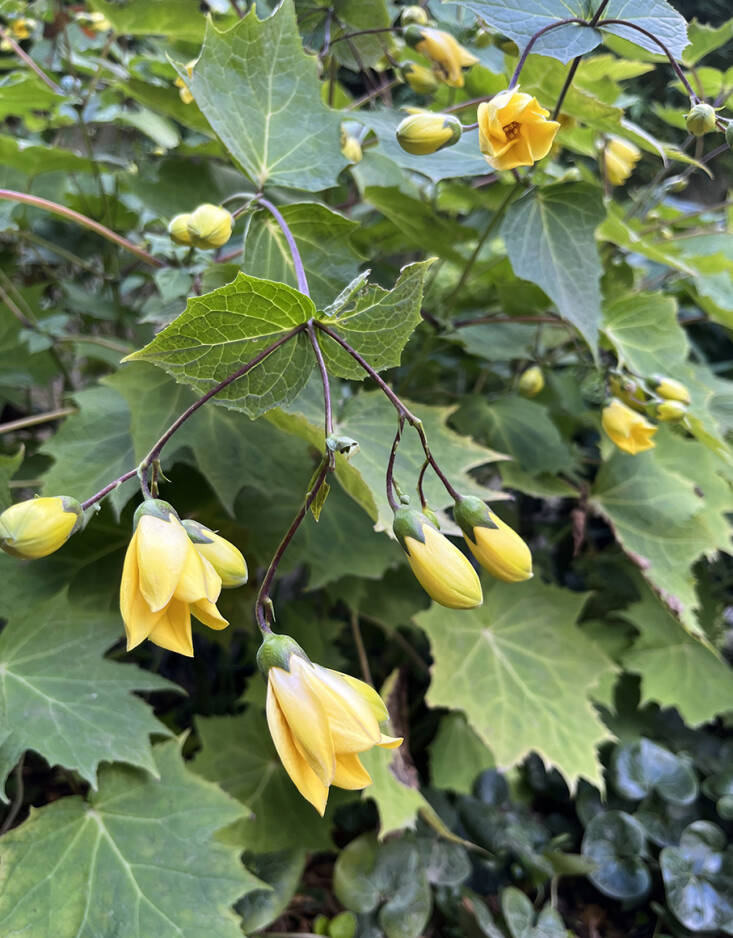Yellow Wax-Bells: Kirengeshoma palmata
After the September Equinox, plants that are waxing rather than waning are especially appealing. With its long petals that seem to be unfurling in slow motion, Kirengeshoma palmata appears to be oblivious to the hastening season, never fully opening, and just as handsome in yellow bud. Part of the Hydrangeaceae family, kirengeshoma resembles hydrangea in its growth habit (at 3 to 4 feet, it is as wide as it is tall) and its striking foliage.
Photography by Kendra Wilson.

At the end of the growing season, lemon yellow kirengeshoma keeps its cool, away from the riot of pinks and oranges. The structural foliage makes it a good mingler, not only with autumn-flowering hydrangea but large-leafed flowers like Japanese anemone.

Palmate leaves combine with jagged green sepals and dark red stems to provide an impressive backdrop to the flowers themselves, which hang like bells up and down the plant, spilling onto a path.


Cheat Sheet
• A deciduous shrub, K. palmata grows well in shade or semi-shade, facing north, east or west. It thrives in the kind of moisture that a woodland setting provides.
• Inconspicuous for most of the summer, kirengeshoma makes a green combination with ferns and hostas before coming into its own.
• A variant, over which there is some debate, Kirengeshoma palmata Koreana Group, is arguably more showy, with some commentators saying that it is bigger, others that it is smaller. K. palmata grows to 3-4 feet.

Keep It Alive
• Hardy to Zone 7, enjoys a sheltered position.
• Like its shade-loving companion hosta, K. palmata is susceptible to the attentions of slugs and snails in its early stages of growth. Keep an eye on it, picking them off, or use nematodes.
• Grow kirengeshoma in soil that is rich in leaf mould, which is more acidic than alkaline.

For more flowering shrubs, see:
- 6 Favorites: Must-Have Flowering Shrubs
- Everything You Need to Know About Hydrangeas
- Gardening 101: Lily-of-the-Valley Shrub









Have a Question or Comment About This Post?
Join the conversation